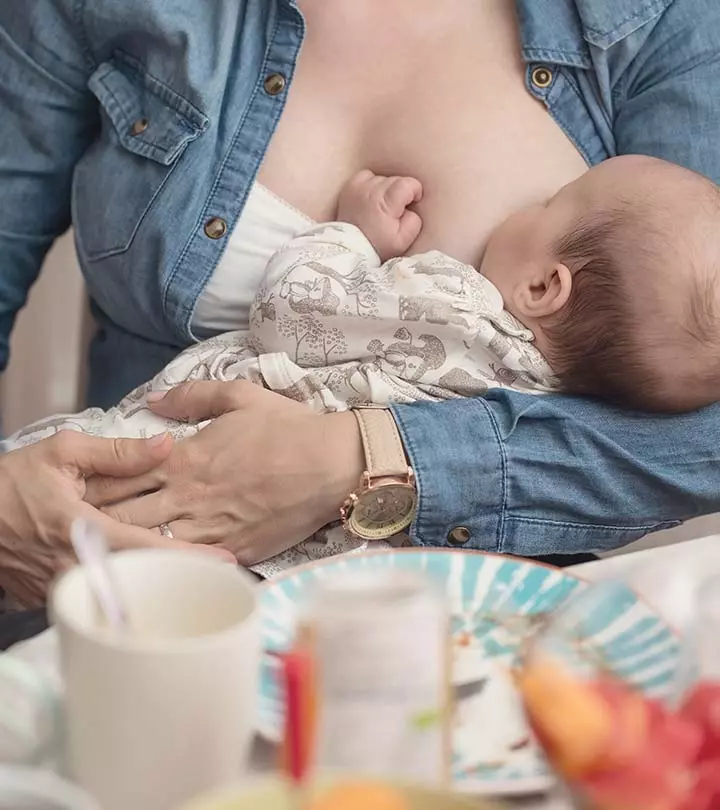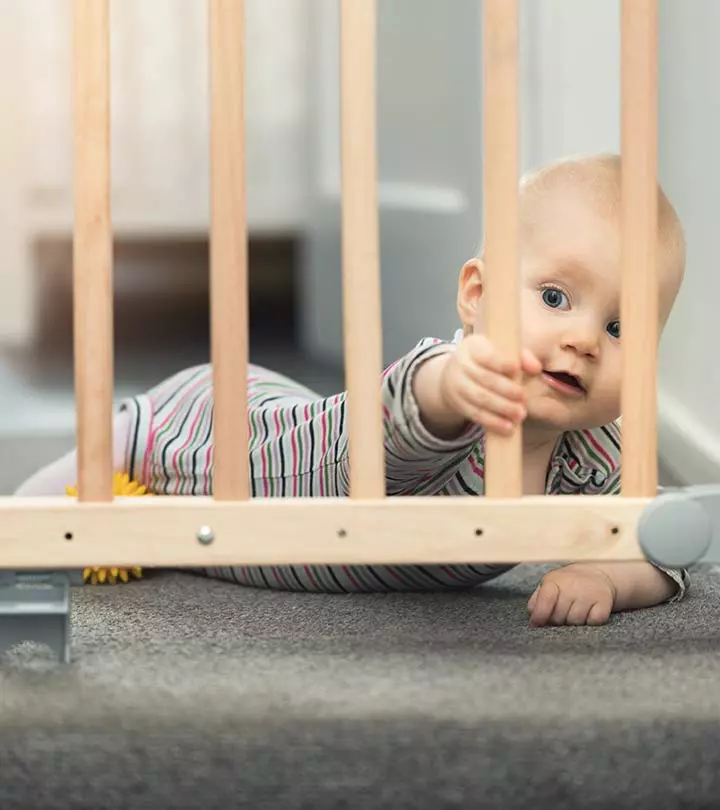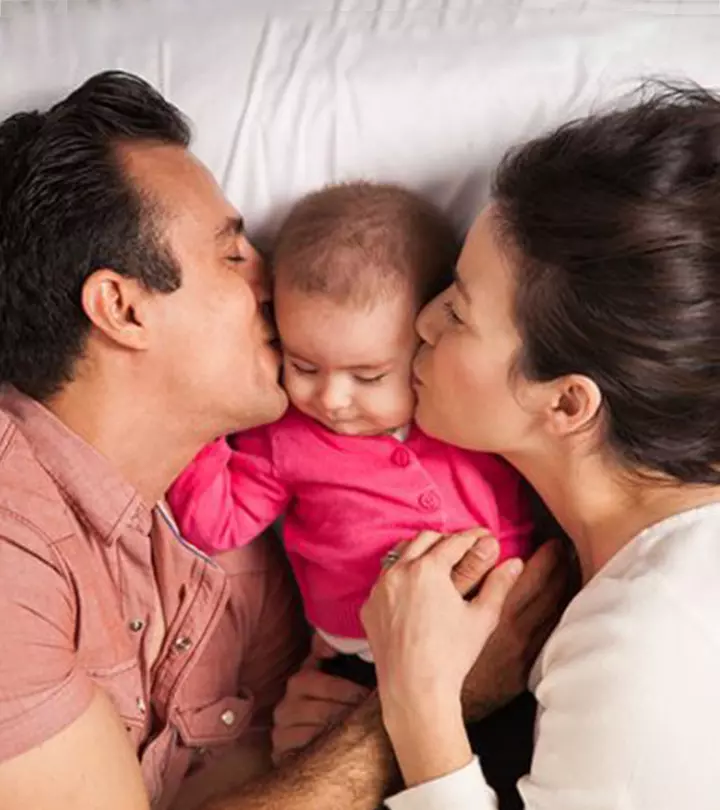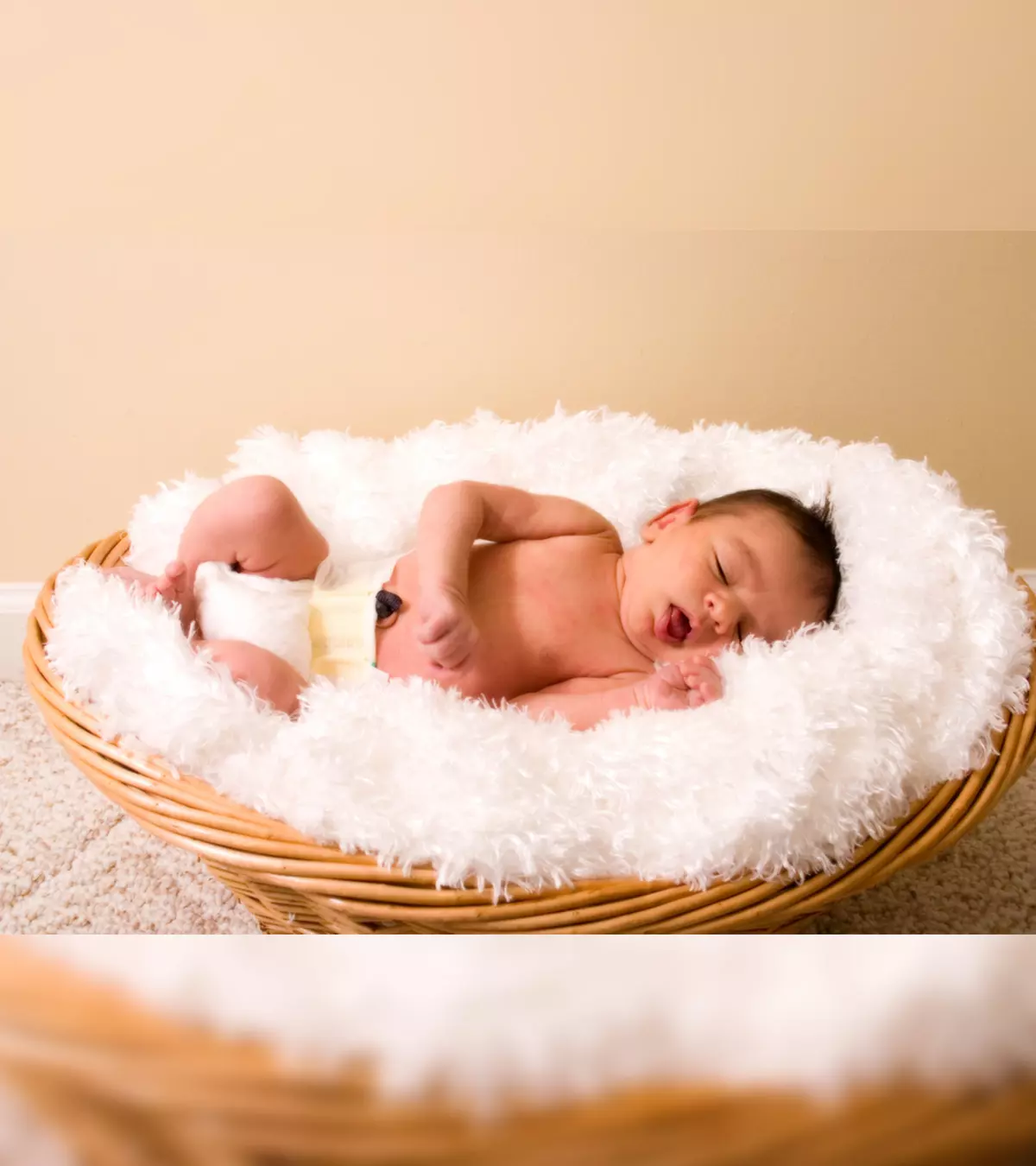
Image: Shutterstock
Giving birth to a child is one of the most beautiful moments in a mother’s life. Soon after birth, the umbilical cord that connects the mother to the baby is cut off. This is done as the umbilical cord has completed its role of supplying food and nutrition to the baby inside the mother’s womb. After removing the umbilical cord, the naval area of the baby needs a little time to heal from the cut. In normal cases, you will notice the navel area will completely heal in a few days.
But sometimes, you may notice that even after two weeks or more, the area hasn’t healed. Instead, it probably looks like it is worsening. If this is the case, your child probably has what is known as an umbilical granuloma. Let’s look at what it is and what you can do about it:
What Is Umbilical Granuloma?
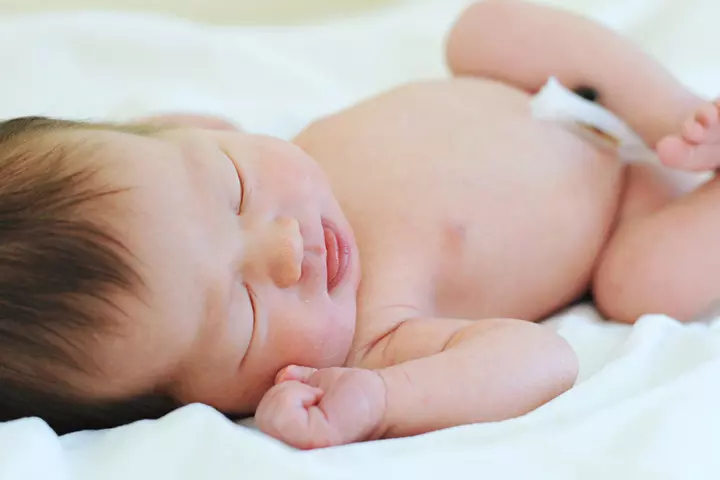
Image: Shutterstock
When an unborn child is in the mother’s womb, it is connected to the mother through the umbilical cord. After birth, the umbilical cord is cut off, and a small part of it is still attached to the navel of your child. In most cases, this stump usually dries up and falls off on its own within a span of one or two weeks after the birth of your child. In other cases, however, the area forms an umbilical granuloma. If the stump does not dry up and fall off even after two weeks, a granuloma is likely to develop around this time. If not treated properly, it can lead to bleeding or infection, and medical intervention will be required (1).
What Causes An Umbilical Granuloma?
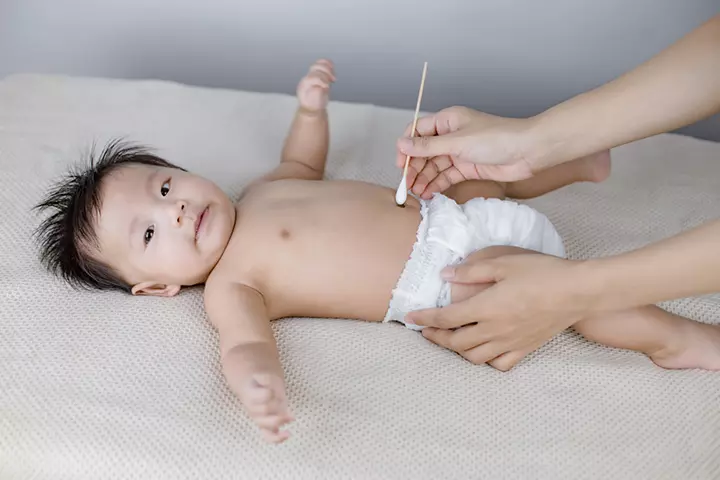
Image: Shutterstock
The exact causes behind an umbilical granuloma in babies are unknown. Medical experts believe that it could be caused due to extra moisture. Additionally, not taking proper care of the area could lead to this condition as well. Since it is like an open wound, it has to be dry and clean, and not keeping it this way leaves the area exposed to infection (1).
Symptoms Of Umbilical Granuloma In Your Baby?
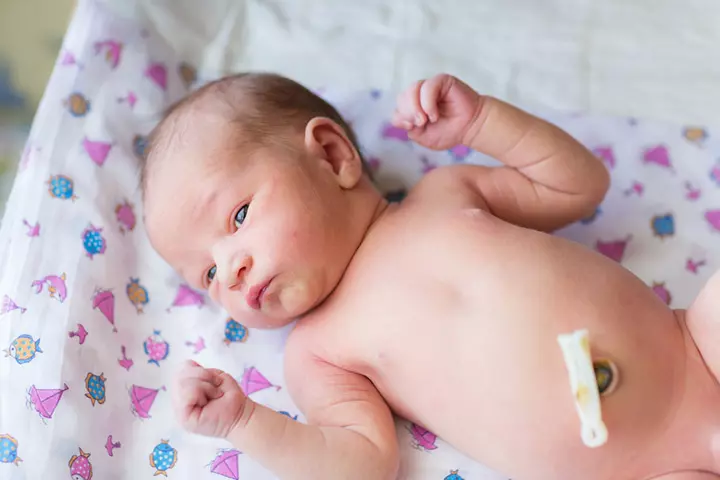
Image: Shutterstock
You’ll know if your little one is having an umbilical granuloma if you notice the following symptoms (1):
- A pinkish or red lump of tissue right over your baby’s belly button, which is also moist.
- Redness around the belly button area, which is also sore because your baby expresses distress when you touch this area.
- Pink or red discharge, or yellow pus that oozes out of the belly button or the umbilical stump.
- A discharge of foul-smelling mucus.
- Skin irritation in and around the navel area.
- A fever
- Semi-dried skin forming near the navel area
Treatment For Umbilical Granuloma
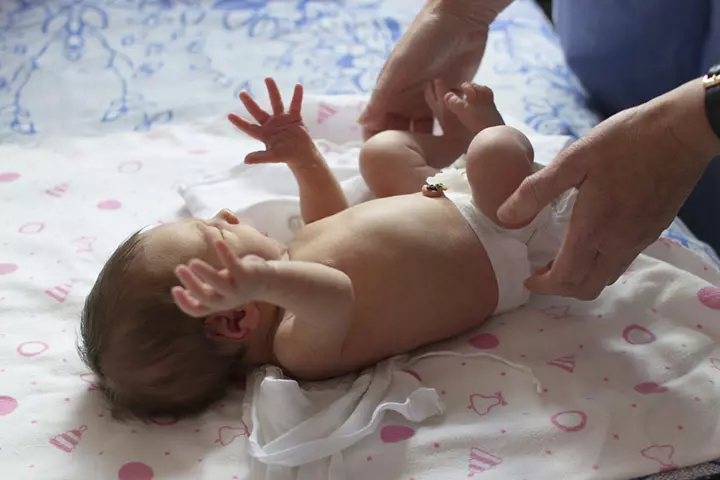
Image: Shutterstock
As we mentioned before, umbilical granuloma will require medical intervention to prevent complications. The treatment is as follows (1), (2):
- Silver nitrate solution is commonly used to dry and treat umbilical granuloma in babies; it is also not painful, making it one of the most common treatments.
- Sometimes, a surgical thread is tied at the base of the stump. This prevents the flow of blood to the tissue, which in turn will cause it to dry and fall off.
- Liquid nitrogen freezes the tissue, thereby causing it to dry and then fall off on its own.
- In worst cases, if none of the above work, the doctor will have to remove the stump surgically, but this is usually done as a last resort.
- In addition to the above-mentioned medical treatments, ensure cleanliness in and around the baby, especially the infected area.
Taking Care Of Your Baby At Home
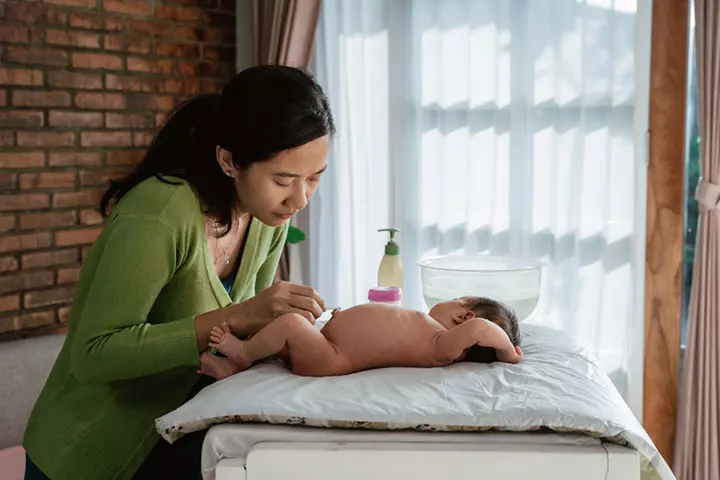
Image: Shutterstock
There are a few measures that can be taken at home to speed up recovery and cause the stump to heal, dry, and fall off:
- Make sure your hands are always clean, particularly when you come in contact with the affected area.
- After bathing your child, ensure that you pat the affected area dry. Leave the area exposed, as it helps heal faster. Open-air will ensure faster drying reducing the chances of further infection from moisture.
- While changing diapers, make sure that it does not cover the belly button area.
- Until the umbilical granuloma heals, give your baby only a sponge bath.
- Use only water to clean the area. Do not use any soap or other product unless prescribed by your doctor.
- Take extra care while changing diapers to prevent the spread of infection.
- The baby might try to touch the infected area and that could worsen the wound. Find some way to not let the baby touch or rub the wound.
- Only allow a handful of people to handle the baby. The more contact, the higher are the chances of infection.
- Rub your hands with a hand sanitizer before lifting or touching the baby. This applies even to other people who are there to visit the baby.
Going Forward

Image: IStock
Granulomas form even in adults though it’s slightly different from the umbilical granulomas of babies. It usually is a formation of lumps due to infection, moisture, or fungal cause. In worse cases, the infected area will give off pus and cause pain and itchiness. So even for adults it’s important to take precautions as soon as you notice the first signs of this infection.
For babies who have recently had the issue of umbilical granuloma, parents will have to stay vigilant and keep a watch if the treated wound is healing. Adequate steps have to be taken to not let further infection happen. This would require maintaining impeccable cleanliness and not exposing the baby to any sort of infectious environment. And don’t forget to stick to the medication the doctor has recommended.
An umbilical granuloma looks a lot worse than it is, but you can manage it better now that you know about it. It can leave you worried and anxious, but with the proper intervention, it can be treated well, leaving behind a cute little belly button! What are your thoughts on this? Let us know in the comments below!
References
- Neonatal Umbilical Mass
https://www.ncbi.nlm.nih.gov/pmc/articles/PMC3628472/ - Treatment with silver nitrate versus topical steroid treatment for umbilical granuloma: A non-inferiority randomized control trial
https://www.ncbi.nlm.nih.gov/pmc/articles/PMC5811027/
Community Experiences
Join the conversation and become a part of our nurturing community! Share your stories, experiences, and insights to connect with fellow parents.

